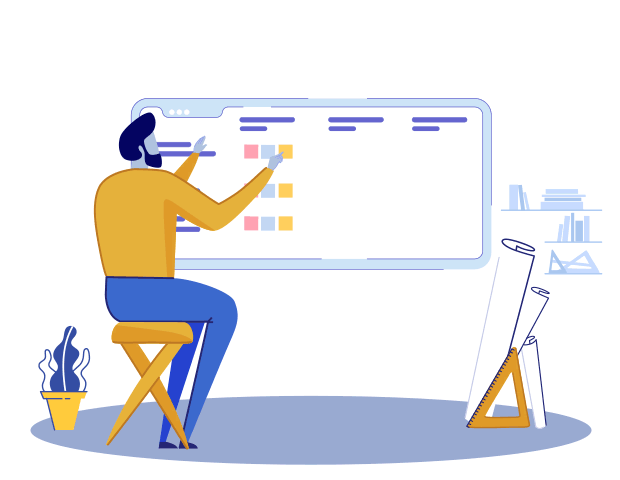Agility Unleashed!
In an era where market dynamics change at a blink, corporations face the formidable challenge of keeping up with an unpredictable business environment. To navigate these turbulent waters, Agile methodology has emerged as an indispensable compass, guiding companies towards a realm of efficiency, responsiveness, and continued growth.
Borne from the software development world, Agile has transcended its initial boundaries, finding a home in a wide array of industries. It has rapidly evolved from a novel concept into an essential strategy, offering organizations a robust framework to survive and flourish amidst competition and constant change. Its inherent emphasis on adaptability, customer-centricity, and continuous improvement has proven transformative for corporates.
Founded on the Agile Manifesto's principles, Agile methodology highlights adaptability, customer collaboration, and continuous improvement as catalysts for business success.
In this article, we delve into the heart of Agile methodology, revealing its potency as an instrument of corporate metamorphosis. We will explore the core Agile techniques — from Scrum and Kanban to Lean and Extreme Programming — and elucidate how they foster collaboration, fuel innovation, and facilitate faster delivery of quality results.
So, whether you are a C-suite executive contemplating organizational overhaul or a team leader seeking to enhance project outcomes, strap in for an insightful journey into the world of Agile. The Agile approach, when fully embraced, promises not only improved productivity but also a cultural shift that places value, transparency, and flexibility at the heart of a corporation's operations. Welcome to the future of corporate project management.
In a world where change is the only constant, Agile methodology offers a lifeline to corporations seeking to stay afloat and ahead. Large corporations, with their complex structures and multifaceted operations, stand to gain immensely from adopting Agile. Here are some of the key benefits:
In short, the Agile methodology gives big businesses the tools they need to react fast and effectively to internal dynamics, customer preferences, and market developments. These businesses can improve their capacity to innovate, deliver, and lead in their own industries by adopting Agile.

Agile and Scrum Training Catalogue
While Agile methodology's transformative power has been recognized by large corporations, its impact on small businesses is equally significant, if not more so. For small businesses, where every decision can have immediate and wide-ranging consequences, Agile's iterative, feedback-driven approach can be a game-changer. Here are some of the key benefits:
So, Agile methodology equips small businesses with a robust framework to manage projects effectively, respond promptly to changes, and deliver products that meet customer needs. Small businesses can increase their resilience, competitiveness, and potential for growth, by choosing Agile.
Agile methodology, while unified in its principles, is diverse in its execution. Several techniques or frameworks fall under the Agile umbrella, each with its unique features, but all aligning with Agile’s core tenets of adaptability, collaboration, and customer-centricity. Understanding these techniques can help corporations find the Agile approach that best suits their needs. Here's a closer look at some of the most widely used Agile techniques:
Perhaps the most well-known Agile technique, Scrum operates in fixed-length iterations (called 'sprints') typically lasting 1-4 weeks, at the end of which a usable product increment is delivered. The process is overseen by a Scrum Master, who ensures that the team follows Scrum principles and is able to work without obstacles, and a Product Owner, who represents the stakeholders' interests.
Key advantage: Scrum's primary strength lies in its simplicity and transparency. Its structured framework, consisting of sprints, daily stand-ups, and reviews, provides clear visibility into the project's progress and any issues encountered. This regular inspection and adaptation make Scrum an effective tool for managing complex projects where requirements are likely to change.
Kanban, which originated in Japanese manufacturing, focuses on visualizing the workflow, limiting work in progress, and maximizing efficiency. Work items are represented visually on a Kanban Board, allowing teams to see the state of every piece of work at any time.
Key advantage: The major advantage of Kanban is its focus on continuous delivery while not overloading the team members. By visualizing work and limiting work in progress, Kanban helps identify bottlenecks and inefficiencies in real-time, making it easier to optimize workflow and balance the team's workload.
Working in an Agile team using Kanban Training
Lean Agile is all about maximizing value to the customer while minimizing waste (inefficient processes, unnecessary features, etc.). Lean teams focus on delivering quality products quickly by eliminating waste across their processes, from product development to marketing and delivery.
Key advantage: Lean's focus on eliminating waste ensures that every action adds value to the customer. It encourages a shift in perspective - from working more to working more efficiently. This continuous search for improvement can lead to significant enhancements in product quality and customer satisfaction.
Lean and Lean Six Sigma Courses
Extreme Programming aims to deliver high-quality software quickly and continuously. It promotes high customer involvement, rapid feedback loops, continuous testing, and planning, as well as close teamwork.
Key advantage: Extreme Programming's main advantage is its emphasis on customer satisfaction. By involving the customer throughout the project and using feedback to drive development, XP ensures that the final product closely aligns with the customer's expectations and requirements.
FDD is a model-driven, short-iteration process that was built around software engineering best practices such as domain object modeling, developing by feature, and code ownership.
Key advantage: FDD shines when it comes to managing larger teams and complex projects. Its model-driven approach and emphasis on specific, client-valued functions allow for precise tracking and reporting, efficient parallel development, and a focus on adding tangible value with each feature completed.
Crystal methodologies, a family of Agile techniques, focus on people, interaction, community, skills, talents, and communications while incorporating strategies to reduce distraction and increase the focus on results.
Key advantage: Crystal methodologies prioritize people and interactions over processes and tools. The primary advantage is its flexibility and adaptability. Crystal recognizes that each team is unique and that processes should be tailored to fit the team, rather than the other way around. This can lead to more effective collaboration and productivity.
Agile methodology, while it originated in the field of software development, is now widely used across a variety of industries. Its principles of adaptability, collaboration, and customer-centricity have universal applicability, making it suitable for almost any project where requirements may change and a flexible, responsive approach is needed.
Here are some of the sectors where Agile methodology is commonly used:
The diverse application of Agile methodology across various industries underscores its flexibility and the universal applicability of its core principles. No matter the sector, Agile can help teams and organizations to work more effectively, deliver better products and services, and adapt more quickly to change.
Agile Project Management Foundation - AgilePM® Training

The Agile revolution is here, transforming the way businesses - big and small, across industries - operate, innovate, and deliver value. Agile methodology, with its potent blend of flexibility, customer-centricity, and constant improvement, is no longer confined to software development. It's a versatile framework that's proving instrumental in driving success in an ever-changing business landscape.
From Scrum to Kanban, Extreme Programming to Lean, the Agile toolbox is rich and varied. Each technique offers unique benefits, and the choice depends on your specific needs and context. Understanding these techniques, their advantages, and where they can be applied is the first step in your Agile journey.
But remember, Agile is more than just a methodology or a set of techniques; it's a mindset. To reap the full benefits, businesses must embrace the Agile philosophy at every level, fostering a culture of collaboration, adaptability, and relentless focus on delivering value to customers.
Are you ready to embark on your Agile journey? Need guidance on how to navigate the Agile landscape and implement its techniques effectively? Our team of Agile experts is here to help. We offer comprehensive Agile courses tailored to your needs. Contact us today, and let's start transforming your business with Agile.